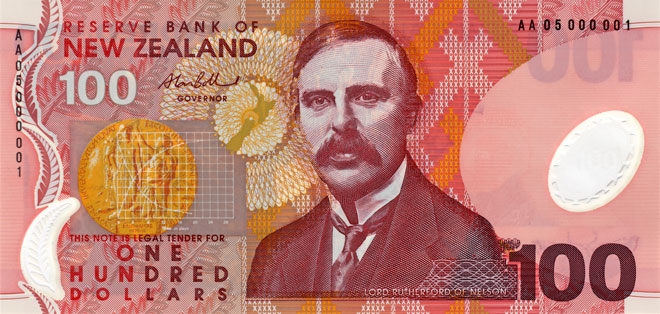
The fifth-series $100 banknote, which is red and yellow, features scientist Ernest Rutherford, his Nobel Prize medal and a diagram showing a curve representing the decay of natural radioactive materials. The tukutuku design behind Rutherford is Whakaaro Kotahi. It comes from the wharenui (meeting house) Kaakati of Whakatū marae in Nelson, and represents unity and consensus.
The main features of the reverse side are the mōhua (yellowhead), the red beech, the South Island lichen moth and the Eglinton valley in Fiordland.
From 1999, a sixth series of banknotes (pictured above) were made from polymer (plastic) instead of paper. This allowed the introduction of a suite of new security features, including micro-printing, a shadow image of Queen Elizabeth II, and transparent windows.
Using this item
This item has been provided for private study purposes (such as school projects, family and local history research) and any published reproduction (print or electronic) may infringe copyright law. It is the responsibility of the user of any material to obtain clearance from the copyright holder.





















Add new comment